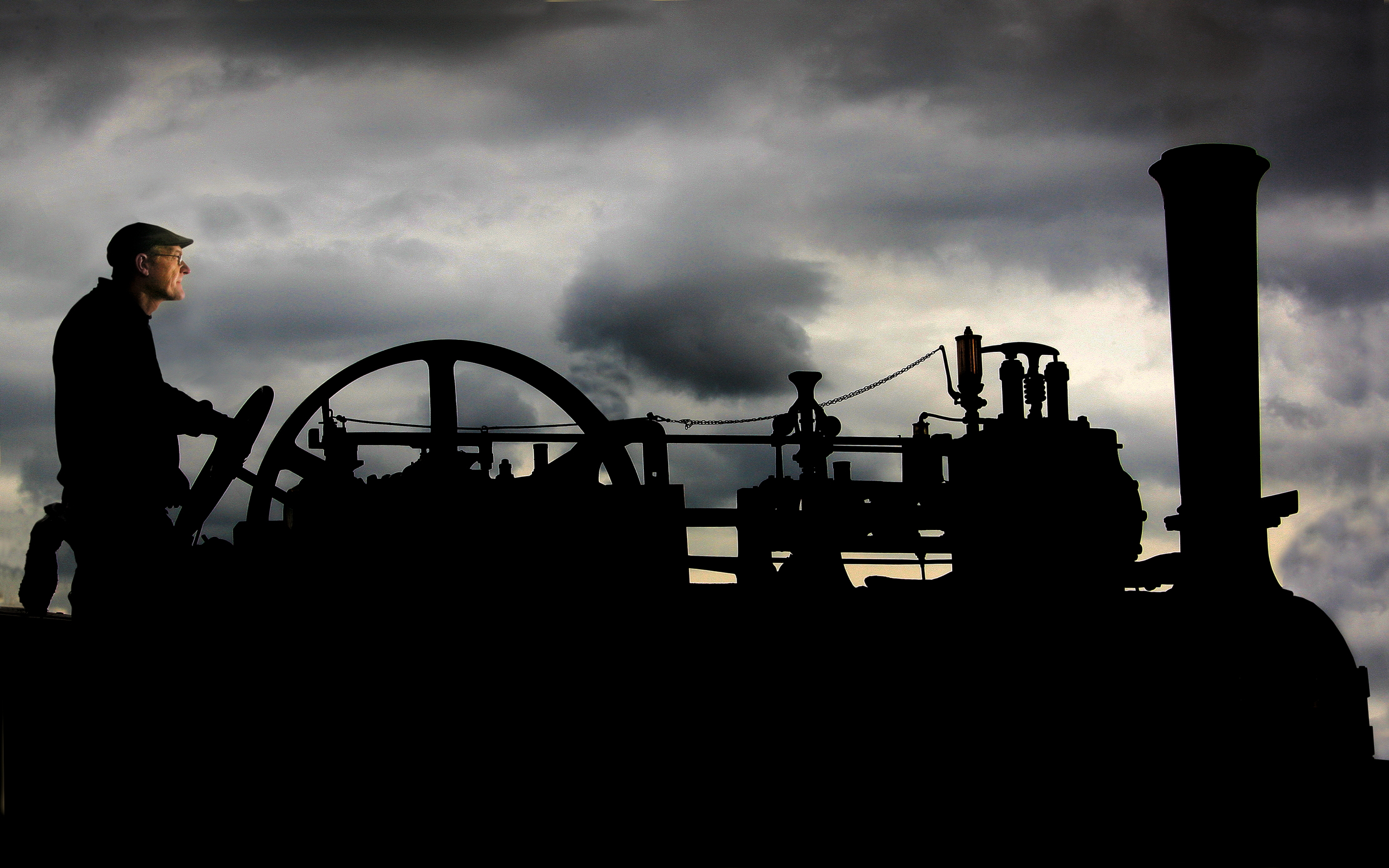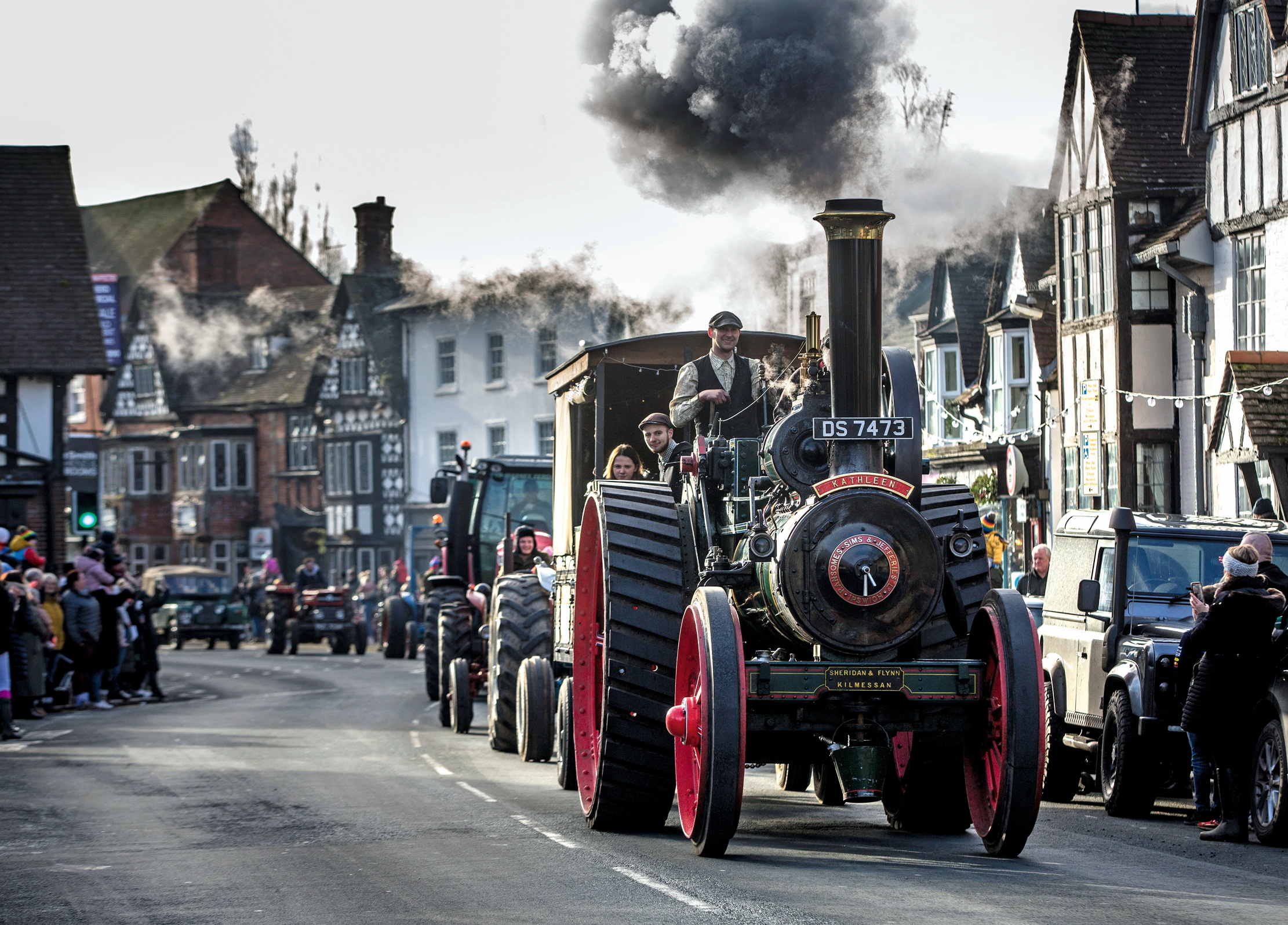Full steam ahead: The joy of the traction engine
Acres of gleaming brass, piercing whistles and history come alive: traction-engine rallies are a gloriously British summer celebration.


Bowling along a country road at this time of year, you find yourself joining a slow-moving queue of traffic and spy what you think is smoke from a tall chimney. At last, the obstruction is revealed: an enormous pair of steel-straked rear wheels and what appears to be a coal bunker, the whole set-up reminiscent of a steam train. The driver and mate are standing, bouncing with the vibrations.
As you overtake, with some alarm at the sheer size and noise of the spectacle, you catch a glimpse of shining brass and the blur of mechanical motion. You’re looking at a traction engine, quite possibly more than 100 years old and more than likely travelling to or from a steam-engine rally.
Once upon a time, these magnificent feats of engineering were an agricultural mainstay, but after the Second World War, the internal-combustion engine tractor — easy to start and only requiring a single operator — was an obvious choice for farmers. Many steam engines went directly to the scrapyard, to be sold for no more than their scrap-metal value.
In 1949, at Appleford in Oxfordshire (then Berkshire), a young farmer by the name of Arthur Napper decided to buy one. He occasionally steamed it up for fun and took it for a trundle to his local pub, The Carpenter’s Arms. His neighbour, former RAF pilot Miles Chetwynd-Stapylton, got himself one, too, and the following year over a game of billiards the two friends decided to race their engines to find out which was the fastest.
The pair met in a field on Sunday, July 30, 1950, ready to race. Twenty-five villagers turned out to watch the unusual spectacle, as Napper’s Marshall engine Old Timer romped home ahead of Chetwynd-Stapylton’s Aveling & Porter Ladygrove.
A rematch the following month drew a much larger crowd, among which was a reporter from the Daily Mirror looking for stories to slake the August news drought. The piece ran, and the steam rally as we know it now was born.

'The smell of bacon and eggs cooking on the shovel mingles in the air with that of smoke and warm oil'
The first official one was a comparatively small affair: the West of England Steam Engine Society’s rally, held near Camborne in Cornwall in 1955 and attended by only six engines. Over the next decade, however, their popularity exploded, aided by the 1963 release of the British comedy The Iron Maiden: the public proved enduringly fond of what were referred to in the Somerset County Gazette in 1955 as ‘gladiators of the road’. The biggest modern-day rally was the now sadly extinct Great Dorset Steam Fair, a five-day gathering of hundreds of engines on a 600-acre site that attracted up to an astonishing 200,000 visitors.
Exquisite houses, the beauty of Nature, and how to get the most from your life, straight to your inbox.
The steam-rally season generally runs from late May through to early September. The events tend to follow a tried-and-tested pattern, taking place over a weekend in the fields of an obliging farmer. The engines gather during the preceding days, some arriving under their own steam, others on the back of low-loaders.
Come the first morning, they are readied, their grates and fire tubes swept, their brass and copper pipes polished and their paintwork carefully wiped down. Wood in fireboxes is ignited by a paraffin-soaked rag and, when it is burning well, coal is added. The smell of bacon and eggs cooking on the shovel mingles in the air with that of smoke and warm oil.
Some time after midday, the engines chuff towards the show’s ring for a grand parade. Over the PA, the drawl of the commentator describes each as it passes the commentary box. The engines all line up and, on command, they blow their whistles, so ear-burstingly loud that the sound can be heard for miles around. The public gathered around the ring are half-listening to the commentary, but largely enjoying the spectacle, as well as ice creams and cider.
The afternoon often sees engines being put to work, carrying out the tasks for which they were built: threshing, wood sawing, road rolling, possibly cultivation or ploughing and perhaps even some heavy haulage. Come the end of the day, some gravitate to the beer tent, where their canopies are festooned with lights they themselves power: a magical and quintessentially British sight.
This article was originally published in Country Life in the July 23 issue.
All steamed up: Upcoming steam rallies
• July 25–27 Welland Steam & Country Rally, Worcestershire Set in the shadow of the Malverns, a wonderful opportunity to watch engines at work
• August 2–3 Weald of Kent Steam & Country Show, Kent This year sees a reunion gathering of engines from the famous Lambert collection
• August 15–17 West of England Steam Engine Society Rally, Cornwall The 70th anniversary of the oldest steam rally in the country
• August 24–25 Shrewsbury Steam Rally, Shropshire A very attractive setting and a traditional atmosphere
• September 20–21 Henham Steam & Country Show, Suffolk A homage to the county’s agricultural history
James Aubryn Hamilton is a freelance photographer and writer who specialises in industrial heritage and transport. He lives in Plymouth with his wife and daughter. He has worked as an antique restorer, specialising in wood carving. As well as creating wood sculptures he now spends much of his time on writing short stories and illustration.
